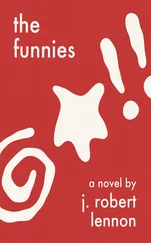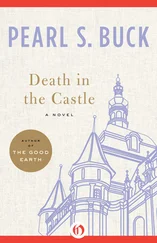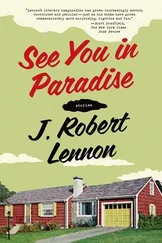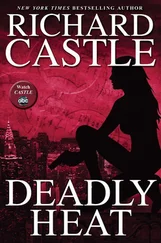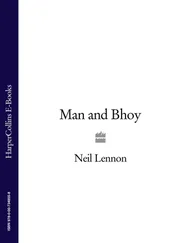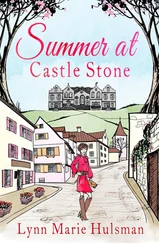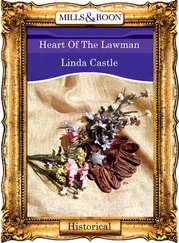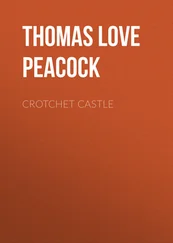When my heart had calmed and I was breathing easily, I took a sip of water and got to my feet. The view around me was indeed spectacular — but, as I had imagined, no more spectacular than the view from my window. I could see over the trees at last, all the way down the valley to the distant steeples, rooftops, and power towers of Gerrysburg. It was the loveliest day since I’d arrived, and it gave me special pleasure to be able to enjoy it here, on the rock I had eyed with curiosity for all these weeks.
I turned then to look back, to the west, toward my house. Even from this distance, its roof appeared dark and tidy, the edges straight, and I felt a sudden and surprising upwelling of pleasure at the work I had done. Perhaps it was my exhaustion and pain; perhaps it was the weather, or my emergence from the woods into the light — but the sight of that roof, peaked tightly against the cloud-studded blue, moved me quite nearly to tears. I took in a deep, grateful breath at my good fortune.
My mood thus buoyed, I began to walk around the summit, looking down into the woods below; and this is what led me to make a discovery that could only be regarded as astonishing. The summit was a slightly convex cap of smoothly weathered stone approximately fifty feet in diameter, and as I have said, I knew that the western face was a sheer cliff, and the southern a gentler slope, the “ankle” that led to the rock’s “toe.” I had not, however, yet explored the northern and eastern faces. I was pacing in a clockwise direction, beginning from the west, and so as I rounded the northern edge (more cliff, it would appear) I was able to peer over the eastern lip to the forest ceiling. Except that what I saw there was not that gently undulating sea of trees. Rather, I saw what first appeared to be a peculiar, peaked cap of stone. I stepped closer to the edge, eager to have a new stimulus for my troubled mind, and looked more closely. There was not one such outcropping, I observed; there were three, plus a fourth that was shaped like a box. They were all connected by a high stone wall, and were not natural formations at all.
I was, in fact, gazing down at the ruins of a castle.
It was, in its design, much like the fifteenth- or sixteenth-century castles popularly portrayed in movies and on television, with towers on three corners and a keep on the fourth, all connected by a curtain wall. Inside the wall, opposite the keep and pressed into the corner, stood a large stone building with small, barred windows; it appeared to open out onto an L-shaped yard with a rough flagstone floor. To the outside of the southern wall was attached a kind of vestigial barbican, which, in the absence of a moat, appeared to serve as a grand entrance. Of course, the entire thing was significantly smaller than a real castle — it was a reproduction in miniature, though quite large in comparison with a regular house. Were it to stand in an otherwise normal neighborhood, it would be perceived as a highly eccentric mansion.
Having given the castle a cursory examination, I revised my perception of it as a “ruin.” Rather, the castle was unkempt — the flagstone yard was overgrown with shrubs and saplings, which partially concealed broken pieces of equipment made of wood and metal. The equipment gave the yard the appearance of a playground or outdoor gym now fallen into disuse. The crenellation of two of the towers was crumbling, with many stones missing, and the third, which stood over the main building, bore the remains of a conical slate roof, now caved in. For all that, however, the structure could be made habitable with a little bit of work, and for a moment I grew excited imagining such a project, the supplies I would need, the steps I would take, the time it would consume to complete them. And then I remembered the survey map that had been included with the title abstract to the property, and the cryptic hole in the middle of it, beside the rock. I lay on my stomach and poked my head out over the edge. The castle’s western wall had been built mere inches from the eastern cliff. There was no question in my mind. I did not own the castle.
I lay back on the rock, closed my eyes, and thought. The castle belonged to someone, and this person had been blacked out in the title abstract. The law office handling the land sale had not been able to locate the name, or had been unwilling to. Should I wish to purchase the remaining property, then, would I have to undertake a search for this person, to find out if he or she were still alive, or if the land had been passed on to family? The prospect of doing so made me uneasy.
The fact was, if I didn’t own that plot, my work on the land would be incomplete. This was all the more true, given what I knew to be standing there. The “missing” land, and the castle, seemed to me like a sore, a wound, in my property; and a wound untreated could of course taint the flesh around it, could kill the entire organism. It bothered me greatly that Jennifer the real estate agent, and the firm of Barris and Haight, should subject my residence here to this impurity, this small corruption. I began to grow angry.
But then, I reasoned, what was the point? There was nothing to be done about it now. I took several deep breaths, clearing my mind of these dark thoughts, and decided instead to explore the castle.
My descent was no less challenging than my ascent had been — more so, even, as I was forced to look down to find the hand- and footholds. Luckily, I remembered more or less where they were, and so, with great care, slowly made my way to the bottom of the “ankle.” I passed the little grotto, with its lone pine, and continued to the “toe,” which I slid down without difficulty. I then proceeded around to the eastern face, where the castle stood.
It was quite cleverly concealed, I could see now, by a thick stand of pine trees, similar to the one on the rock. Even now, with the deciduous portion of the woods not fully in leaf, I could not make out the castle at all, until I was nearly upon it.
I reached the barbican first. It was the approximate size of a large garage, with two arrow-slit openings flanking a large, eight-foot wooden door. The door had not been fashioned to appear “old,” but was clearly custom-made from very heavy timber, with crude iron strips holding the pieces together. Its hinges were as large as a man’s foot, and they were heavily rusted, as were the enormous latch and padlock that held the door closed. I stepped up to this entrance and tried the handle. The door, of course, did not budge. Indeed, it might as well have been part of the wall, so tightly was it shut. I pushed my fingers into the cracks along the top and sides, and felt no jamb — the door had to be at least three inches thick! I moved aside a few feet and reached up toward one of the arrow slits. I could touch it, I discovered, only if I jumped. So I ignored my aches and pains and leaped, catching hold of the opening. Finding some purchase on the mortared stones with my climbing shoes, I scrambled up far enough to peer through the slot — but alas, there was nothing to be seen but darkness. The only indication that there was a room there at all was the scent of dampness and mold.
I dropped to the ground and continued to walk around the building. My impression of the curtain wall’s great height had not been incorrect: it was twenty feet tall, and sheer, and no windows broke the uninterrupted surface. Only the towers and keep bore windows, and they were far too high to see into, except the few that framed a small rectangle of sky. Soon, I had made my way back to the rock on the north side, and I had seen no other point of entry.
It was at this time that I realized I was growing hungry, and that I had brought very little food with me — certainly not enough for a second night in the woods. The time was likely to be late afternoon, and the sun would not last long; if I wanted to leave for the house, the time to do so had come. I would eat some fruit and meat, and drink my water, and then begin to find my way back.
Читать дальше

